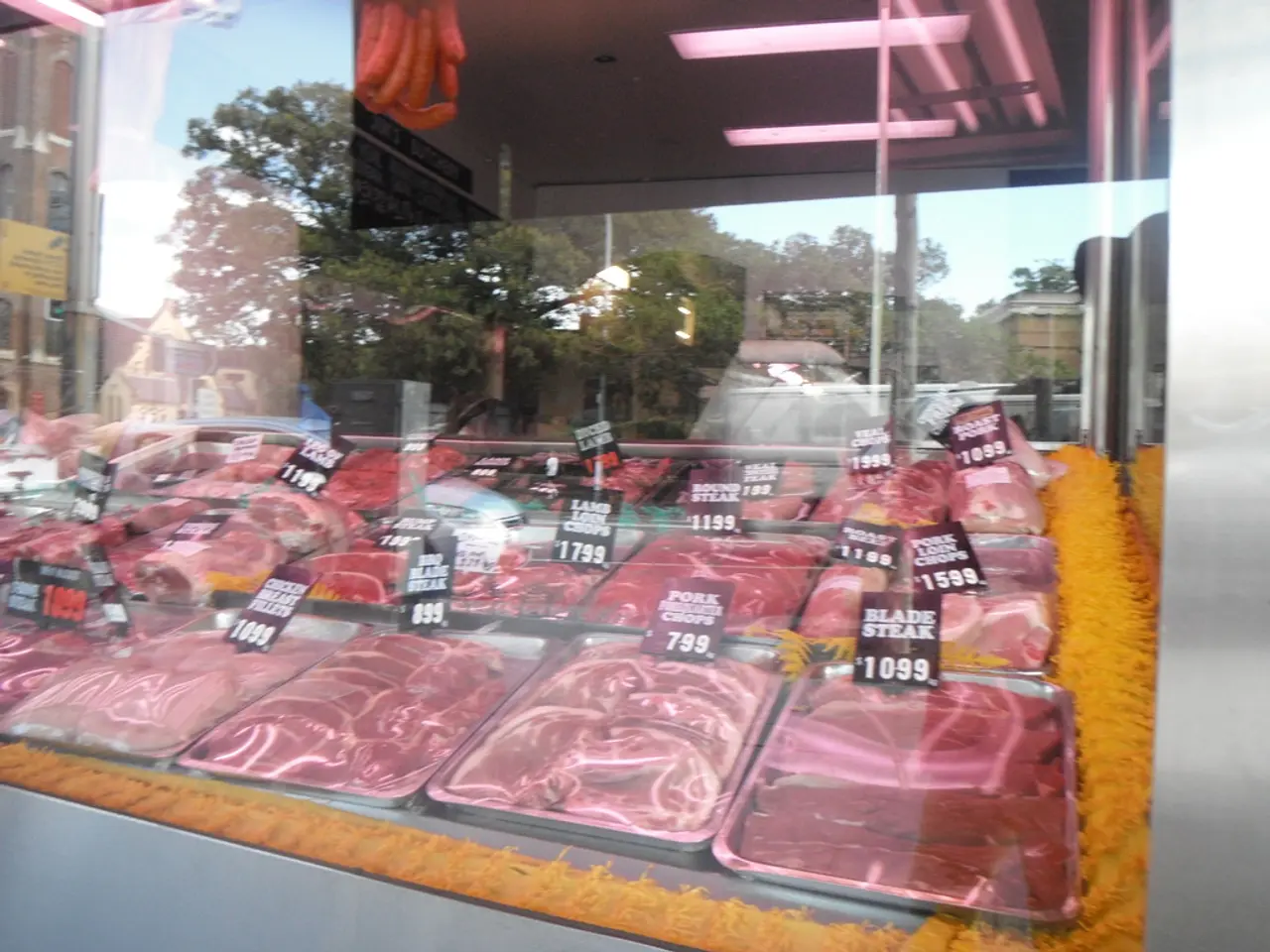Youth express interest in allocating additional funds towards meat consumption
In the face of soaring meat prices, advocates for animal welfare and climate change have called for significant increases to reflect the ecological costs and improve animal welfare [1]. However, the trend shows no signs of slowing down, especially for beef and veal, with prices reaching record highs [2].
Meat consumption in the country remains high, with each individual consuming over 50 kilograms per capita each year [3]. Interestingly, while older generations are less inclined to spend more on meat, with only 43 percent of Gen X and 40 percent of Baby Boomers willing to do so [4], the younger generations are showing a marked willingness to pay more.
According to a survey by the Institute of the German Economy (IW), approximately 57 percent of those born in 1997 or later are willing to pay more for meat [5]. This willingness is largely driven by the demand for higher quality and premium meat products, as younger consumers often seek better eating experiences with higher quality grades like Prime and Choice [6].
The increase in meat prices, particularly for beef, has also been attributed to shifts in consumer habits. Inflation in the restaurant sector has pushed consumers to buy more meat at retail for home cooking, maintaining strong demand across different income segments, including younger shoppers [6]. Additionally, younger generations may prioritize protein quality or specific cuts, which supports paying a premium despite the higher prices.
Despite the growing interest in a vegan diet, meat consumption remains high. Some social media users have even called for a "grill price brake," but the Agricultural Market Information Company (AMI) explains that the price increases are due to tight supplies and strong consumer demand [7].
Looking ahead, medium-term forecasts suggest that real meat prices could decline after peaking around 2027, as herd sizes rebuild and productivity improves. However, the near-term outlook still shows price pressure, with beef and veal prices expected to increase by 8.8% in 2025 due to supply constraints like drought and herd reductions [2].
In conclusion, meat prices, especially beef, are currently at record highs but demand remains strong due to quality preferences and shifts in buying behavior among younger consumers who are willing to pay more for these qualities amidst supply challenges. The future of meat prices remains uncertain, but it is clear that the trend towards higher prices is not likely to abate anytime soon.
[1] The Guardian. (2021, November 17). Meat prices surge as climate change and demand for plant-based diets bite. Retrieved from https://www.theguardian.com/environment/2021/nov/17/meat-prices-surge-as-climate-change-and-demand-for-plant-based-diets-bite
[2] United States Department of Agriculture. (2021). Livestock, Dairy, and Poultry Outlook – June 2021. Retrieved from https://www.usda.gov/oce/lp/meatprice/june2021.pdf
[3] Statista. (2020). Meat consumption in Germany from 1961 to 2025. Retrieved from https://www.statista.com/statistics/263044/meat-consumption-in-germany/
[4] IW Economy. (2021). Jüngere Generation bereit auf höhere Fleischpreise. Retrieved from https://www.iw-koeln.de/presse/pressemitteilungen/jungere-generation-bereit-auf-hohere-fleischpreise
[5] IW Economy. (2021). Real meat prices to peak around 2027. Retrieved from https://www.iw-koeln.de/presse/pressemitteilungen/real-meat-prices-to-peak-around-2027
[6] Reuters. (2021, June 16). Younger consumers driving demand for higher-priced meat in the U.S. Retrieved from https://www.reuters.com/business/retail-consumer/younger-consumers-driving-demand-higher-priced-meat-us-2021-06-16/
[7] AMI. (2021). Meat price increases. Retrieved from https://www.ami.de/en/news/meat-price-increases
- The science of food-and-drink trends reveals a growing interest in high-quality and premium meat products within the health-and-wellness and lifestyle sectors, particularly among younger consumers.
- The fitness-and-exercise industry, in response to increasing meat prices, has noted an interest from younger consumers in incorporating plant-based nutritional alternatives in their cooking to maintain a balanced diet.
- Proponents of an eco-friendly, animal-friendly, and cost-effective lifestyle have suggested cooking with less meat as a means to combat soaring meat prices and reduce ecological impact.
- In an attempt to address the rising prices of health-and-wellness staples like meat, some food enthusiasts have experimented with innovative and cost-effective cooking techniques to make premium food affordable and accessible.




